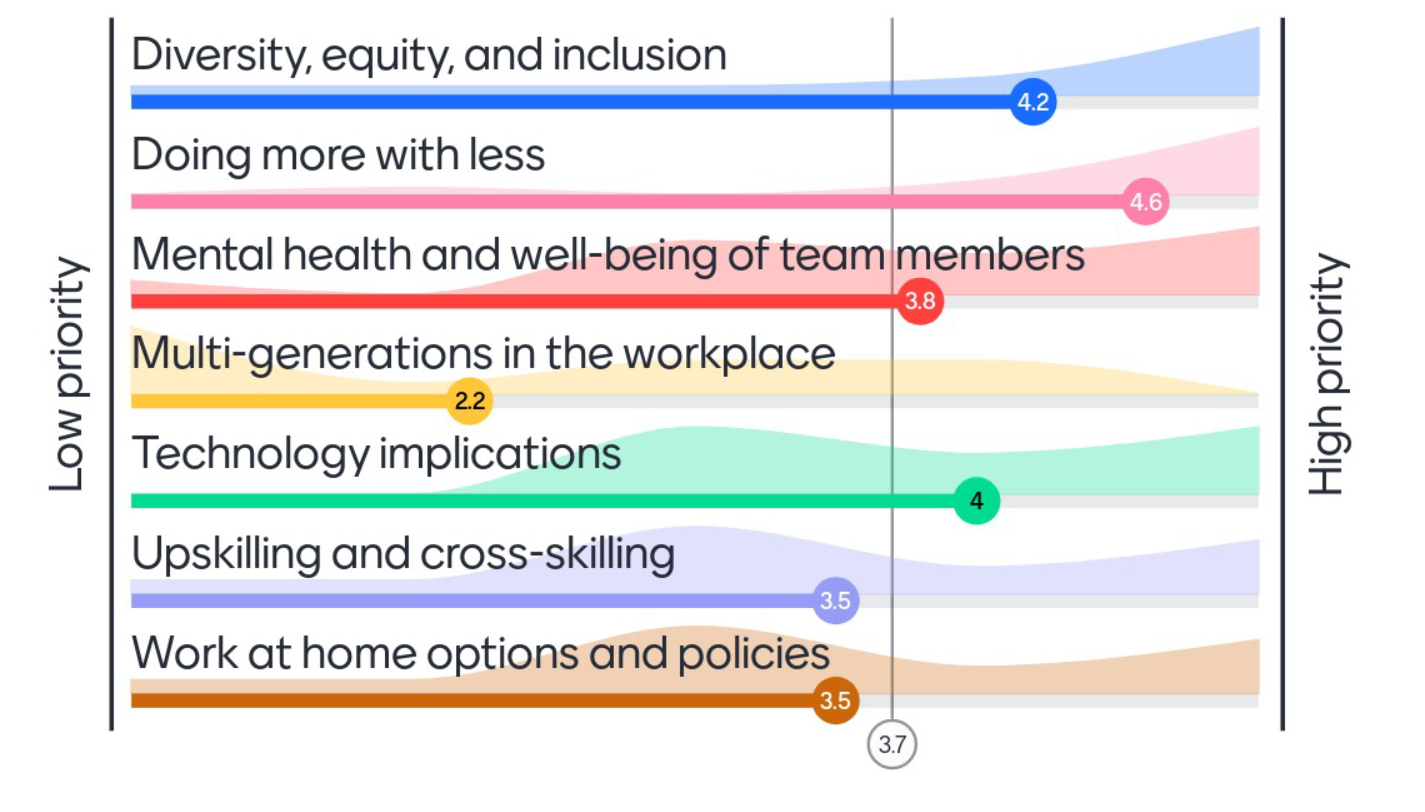By Frances Moffett, Editorial Content Director, HSMAI
Industry leaders everywhere have been navigating the new landscape brought on by the pandemic over the past two years, analyzing trends that seem to frequently change and managing shifting goals to reflect these constant developments. HSMAI recently sat with leaders from Accor, Aqua-Aston Hospitality, Associated Luxury Hotels International, CoralTree Hospitality, Extended Stay America, Hilton, IHG, KSL Resorts, Marriott International, Outrigger Hospitality Group, Red Roof Inn, and Wyndham Hotels & Resorts during its Chief Marketing Officer Executive Roundtable, presented in partnership with The Hotels Network and Uplift.
The group discussed many topics, ranging from priorities for this year, loyalty programs, working with agencies, resource allocation and more. Here are some of the highlights from this robust conversation.
Q&A: In the new talent and work landscape of your corporate team, what themes are a priority for you in 2022?
 “The one that’s really polarizing for us as a company is the work-at-home options and policies. The talent who are newer to the industry find it inconceivable that we wouldn’t be completely flexible with work-at-home options. While [the more seasoned professionals] feel that working from a location is sort of mission-critical because we expect it of our frontline people. The newer professionals just expect it to be an option, and they’re getting it in other industries.”
“The one that’s really polarizing for us as a company is the work-at-home options and policies. The talent who are newer to the industry find it inconceivable that we wouldn’t be completely flexible with work-at-home options. While [the more seasoned professionals] feel that working from a location is sort of mission-critical because we expect it of our frontline people. The newer professionals just expect it to be an option, and they’re getting it in other industries.”- “I think [offering more flexibility] is the biggest opportunity in our industry. I had a managing director of a large resort tell me they learned during the pandemic that dual-income families are willing to take a sacrifice — to earn less — to work from home part-time versus being full-time in the workforce. They want the freedom and flexibility to work for whomever and however they want. It’s impacting the ability to recruit for middle-manager jobs.”
- “If we’re going to continue to work in this environment of doing more with less, my team is so much more efficient when they don’t have to get in cars and drive an hour or so to come in. They did so much with less and literally carried the company through the recovery, and now, they don’t really see the value of coming in, considering they already did so much with less. So, we have to show the value of being onsite [if we want to do that], and it has to be very empirical and clear to our teams.”
Q&A: What loyalty or business direct solutions are you seeing outside of traditional loyalty programs?
- “We’re tailoring our loyalty program more toward the needs of our specific target guest, as opposed to just travelers broadly. In our case, that translates to, what are the unique benefits and interests associated with people who are staying a week or more, as a point of competitive differentiation.”
- “Especially for smaller companies like us, we are tapping into the power of alliances, leveraging marketing partnerships, and being less traditional, whether it’s through airlines, credit cards, etc.”
Q&A: What changes are you seeing in the agency landscape?
- “Since the pandemic, it seems like agencies have gotten more specialized. You have the website development companies and the media companies and the search companies, where we used to have that all kind of pulled together [under one umbrella]. Now, it seems like you have to reeducate yourself and, at least in my search, I’ve been having a hard time finding an agency that can really put all the strategy together.”
Q&A: How has resource allocation shifted?
- “If we want to be better stewards in connecting with the local teams, villages, and communities [in which we work], we must have more people inside — whether it’s the resort, the property, or the campus — who play that community role and can build those bridges while facilitating between the team inside and outside. But, with that, comes things like reconsidering the terms ‘concierge’ or ‘director of activities and recreation’ — maybe these terms are outdated. Now, I think it’s more about, how can we help guests really have the greatest success when they stay with us, and finding more genuine ways to help them discover what happens inside, what happens outside, and to make those connections. Maybe that means more of those roles appearing on the roster, possibly at the expense of some other positions.”
Two Marketing Trends to Have on Your Radar
- Predictive personalization
Consumers want to be served content they like and information that is relevant to them.
Marketing professionals can identify the customers who are visiting their websites and predict their behaviors using a predictive algorithm through AI. As pointed out during the discussion, “We could maximize the percentage of our direct bookings by understanding the customer and not wasting time, effort, resources, and budget in consumers who are not really going to convert.”
- By now, pay later
Customers want more payment options and “buy now, pay later” is exploding across the internet. As reported during the session, 55% of U.S. consumers have used a buy now, pay later service, and this number is expected to grow. For hospitality marketers, this could be a new opportunity for increasing bookings at their property across all demographics.
